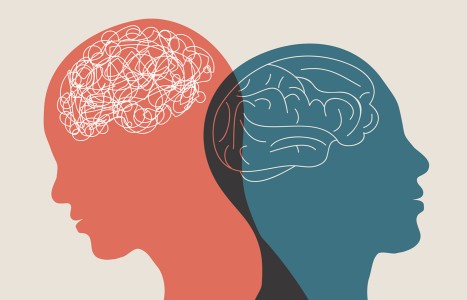Consequences for HIPAA violations can often be quite harsh. If someone has breached the HIPAA privacy regulations – even without any malicious intent, civil penalties are applicable: $100 per violation for unawareness, a minimum of $1,000 for reasonable cause, a minimum of $10,000 if willful neglect is present and then rectified, and finally, a minimum of $50,000 for individuals who act with willful neglect and ignore the issue.
| Digital ExclusiveHalt Allergies With Moxibustion Therapy
An allergy is an immune system disorder in which the body is hypersensitive to normally harmless substances in the environment. Frequent contact with airborne particles such as dust or pollen can result in reactions such as irritation of the nose, sneezing, itching and redness of the eyes, a condition also referred to as allergic rhinitis. Inhaled allergens can also lead to asthmatic symptoms, in which the airways narrow (bronchoconstriction) and production of mucus increases in the lungs, resulting in shortness of breath (dyspnea), coughing and wheezing.1
According to the aforementioned theory, the only way we can avoid airborne allergies is to be separated from the air! As a matter of fact, we are human beings, the cleverest creatures to have lived on earth. We can't survive without air. This is the biggest paradox.
Traditional Chinese Medicine has its own way to analyze this condition. The Huangdineijing (Yellow Emperor's Classic of Medicine) states, "A person who has vigorous anti-pathogenic qi is never affected by any kind of evil; a person who is invaded by an evil must have weak anti-pathogenic qi." Generally speaking, the course of disease is actually the process of struggle between the anti-pathogenic qi and pathogenic factors. If the anti-pathogenic qi wins the struggle, the person will be fine. If the pathogenic factors win the struggle, the person will get sick with an allergy, common cold or other similar condition.
From the Traditional Chinese Medicine standpoint, anti-pathogenic qi includes the functional activities of the Zang-Fu organs, meridians, qi and blood, and the resistance and recovery capacity of the body, also known as "the vital or positive energy." Pathogenic factors generally include various factors causing disease and are known as "the evil or negative energy," such as abnormal climates, emotional changes and trauma.

To translate this into the Western medicine standpoint, anti-pathogenic qi refers to the normal function of the immune system. The immune system is a system of biological structures and processes within a living organism that protects against invading agents that may cause disease. To function properly, an immune system must detect a wide variety of substances (pathogenic factors) such as bacteria, viruses and fungi, and distinguish them from the body's own healthy tissue.2
On the whole, our immune system does a remarkable job of defending us against disease. Therefore, boosting our immune system is the first and the most important step to preventing allergy symptoms.
How to Boost Your Immune System using Moxibustion
Moxibustion has been successfully used to boost the immune system and prevent allergic reactions for centuries. According to the record of classic TCM texts, applying indirect moxibustion at Zusanli (ST36, bilaterally) and Dazhui (GV14) once per day for five minutes at each acupoint is an efficient way to boost the immune system and prevent allergies.
The Huangdineijing states, "Yang qi is just like the sun in the heaven; yang deficiency's reaction in the human being is just like the plants that lack sunshine." And, The Materia Medica states, "The moxa leaf is bitter and acrid, producing warmth when used in a small amount and strong heat when used in a large amount. Most importantly, the moxa leaf is of pure yang nature having the ability to restore the primary yang from collapse." In a word, moxibustion is a good resource for strengthening the yang.
Zusanli (ST36) is one of the most famous and widely used points. The translation means "leg three miles." It is said that its name was derived from the legend according to which a weary traveler (during the time when travel was predominantly on foot) would stimulate Zusanli and become energized enough to be able easily to journey an additional three miles. It is also the He-sea point and Lower He-sea point of the stomach meridian. It strengthens the whole body, especially the immune system, tones the muscles, aids digestion and relieves fatigue.
From the TCM standpoint, the spleen and stomach are the root of acquired constitution. They work together as the acquired source of energy in the body. The spleen and stomach transform the food and drink into energy and then transport it to where it is needed. A well-functioning spleen and stomach are essential for this process. By doing moxibustion on this point, we increase our body's ability to absorb the nutrients it needs to keep our energy up as well as boosting our immune system.
Dazhui (GV14) is a point of the Du meridian and the intersecting point of the six yang meridians. The Du meridian is the "sea of yang." Moxibustion at Dazhui (GV14) is the best way to strengthen yang, boost the immune system and prevent allergies.
Scientific research has been done in order to investigate the regulative effect of moxa-cone moxibustion on the phagocytic function of macrophages and provide experimental data for the study of other moxibustion methods. A group of 130 mice were divided into a normal control group - a moxibustion group- a hypoimmune-model group, and a hypoimmune-plus-moxibustion group. Flow cytometry and smear examination were adopted to observe phagocytosis of macrophages in these groups. The results showed that moxa-cone moxibustion of acupoint Dazhui (Du14) had no significant influence on phagocytosis of macrophages in the normal mice whereas it exerted marked enhancing effect on phagocytosis of macrophages in the hypoimmune mice.3 The study reported that moxibustion on Dazhui (Du14) can strengthen the respiratory function including allergy cases.
Some researchers' results showed that moxibustion of Dazhui (GV14) can restrain the secretion of interleukin 4 (IL-4), relieve the inflammatory reaction of immunoglobulin E (IgE), and enhance the ratio of interferon gamma (IFN-gamma) to IL-4 in asthmatic rats, which presents an increased tendency of the curative effect along with the extension of the treatment time from 15 minutes to 60 minutes. Excessively long time (>60 minutes) of treatment is not necessary.4
Manipulation of Moxibustion Therapy
For many years, various moxibustion therapies have been used in China, such as moxibustion with moxa cones, with moxa sticks and with warming needles. For the sake of safety and therapeutic effect, this author recommends the use of moxibustion with moxa sticks and warming needles.
Moxibustion with moxa sticks is also known as mild-warm moxibustion. Apply an ignited moxa stick over Dazhui (GV14) and Zusanli (ST36) to bring a mild warmth to the points for 20 to 30 minutes.
Moxibustion with warming needles is a method of acupuncture combined with moxibustion. After the arrival of qi and with the needle retained in the point, wrap the needle handle with a unit of moxa wool and ignite it to cause a mild heat sensation around the point.5
The heat from moxibustion is very penetrating, making it effective for boosting the immune system. When applied to specific acupoints for allergy, the body absorbs the heat into its deepest levels, restoring the body's anti-pathogenic qi and energy in the body.
References
- http://en.wikipedia.org/wiki/Allergy
- http://en.wikipedia.org/wiki/Immune_system.
- Zhu Wenlian, Liu Renguan. Effects of moxa-cone moxibustion at Dazhui acupoint on the phagocytic function of macrophages in hypoimmune mice. Journal of Beijing University of Traditional Chinese Medicine 2005;28910:89-90.
- Zhang W, Chen MR, Xiong J. Effects of different quantity of moxibustion at "Dazhui" (GV 14) on cellular immunity in asthmatic rats. Zhen Ci Yan Jiu. 2012 Jun;37(3):202-5, 217.
- Xin-nong Cheng. Chinese Acupuncture & Moxibustion. Foreign Languages Press; Third Edition 2010 edition (May 1, 2010). ISBN-10: 7119059947.



